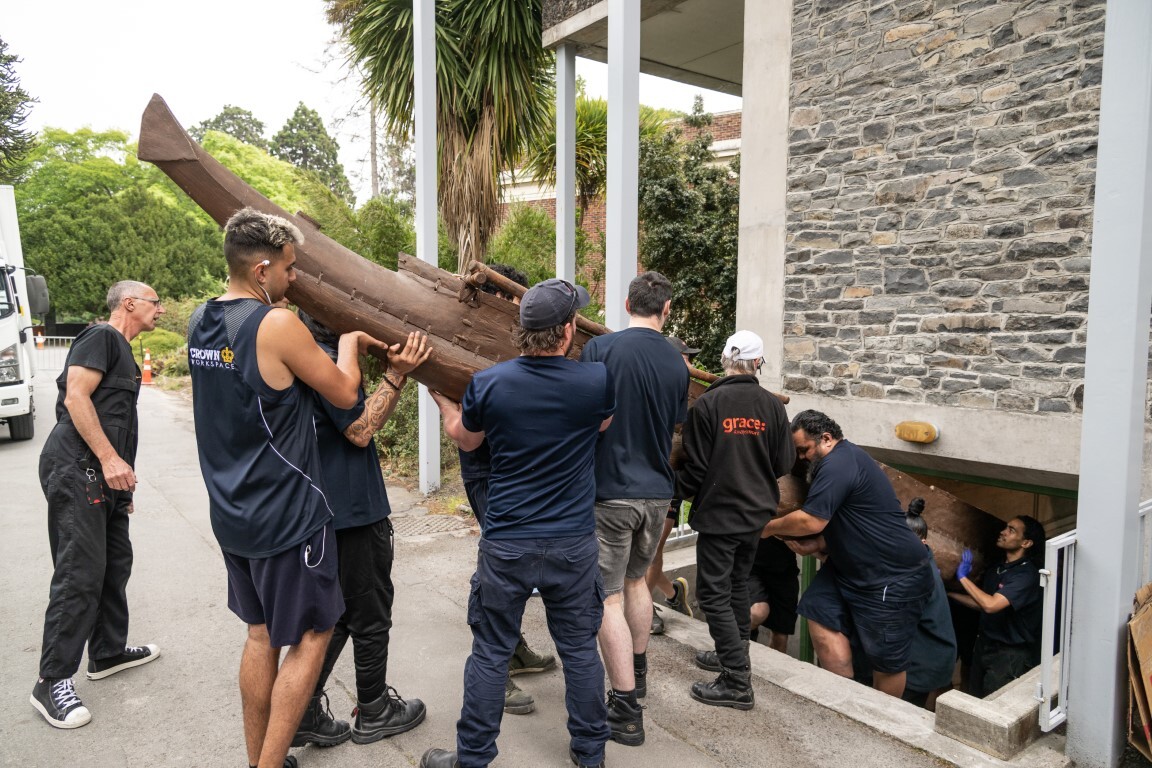After 150 years, Canterbury Museum has embarked on an exciting new journey – a journey that has two distinct but converging passages.
The first is a physical journey to redevelop the Museum buildings. The second is a cultural development journey focused on forming stronger and deeper relationships with mana whenua through honouring Te Tiriti o Waitangi and the opportunities true partnership offers all our communities.

Araiteuru was one of the early waka hourua (double hulled canoe) to make the migration to Aotearoa New Zealand and the first to reach Te Waipounamu the South Island. It is the name gifted by mana whenua to the Māori gallery that will be the physical and spiritual heart of the new Museum. This will be the meeting place where the house Te Whare a Tahu will stand and where Museum visitors will receive the welcome and warmth of mana whenua.
The word Araiteuru can mean “pathway to or from the west”, suggesting that the name of the waka is linked to its journey across Te Moana-a-kiwa the Pacific Ocean to Te Waipounamu.
There is little doubt that Araiteuru speaks of whakapapa, voyaging, navigation, discovery, new horizons, tikanga, and of bravery and leadership. It also speaks to the great journey that lies ahead as we reimagine and redevelop not just the buildings but the institution itself.
Araiteuru – Ara nui. Ara roa. Ara ake rā – The explorer: A great journey. An extended journey. A revealing journey is the name we have chosen for the journey with the blessing of our Ōhākī o Ngā Tīpuna (iwi liaison group). This journey will see us acknowledge the work of those who have come before us and lift our gaze towards a new horizon that fully embraces Titiriti and the place of mana whenua in the Museum.
Waka hourua (double hulled waka), are single vessels with two separate hulls lashed together for stability – strong enough to withstand powerful waves, yet agile enough to navigate the ocean currents and deliver their crew safely to their new home. This is the hope we hold for our voyage as we prepare to set sail from our sheltered shores, charting a course through deep water and the promise of relationships built on understanding and partnership.
Like every journey it starts with the first step which was the closing of our beloved Museum in April 2023. Now that we are settled in a temporary home close by, we can start building our waka hourua. It will take time and effort. We will need experts to help. We will have to learn new skills and ways of doing things if our waka is going to be seaworthy enough to make the journey.
We invite you to join us on Araiteuru – Ara nui. Ara roa. Ara ake rā, our exciting journey to create a new Museum that celebrates people and place. Come with us as we fashion our waka hourua and gain the knowledge we need to sail and navigate a course towards a future where the winds of equity and understanding fill our sails.
View our update on the Museum redevelopment and launch of Araiteuru below. Watch until the end for a fly through of the new Museum.


